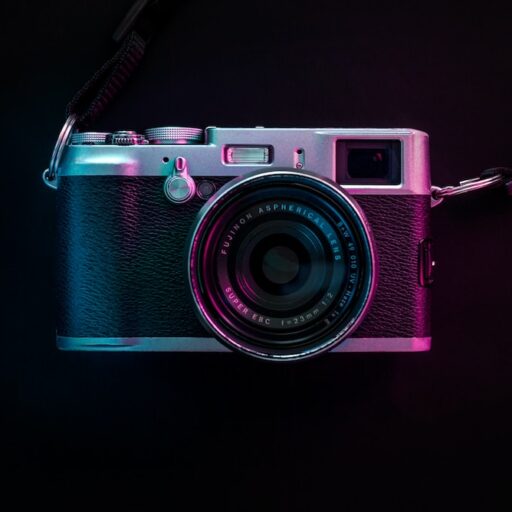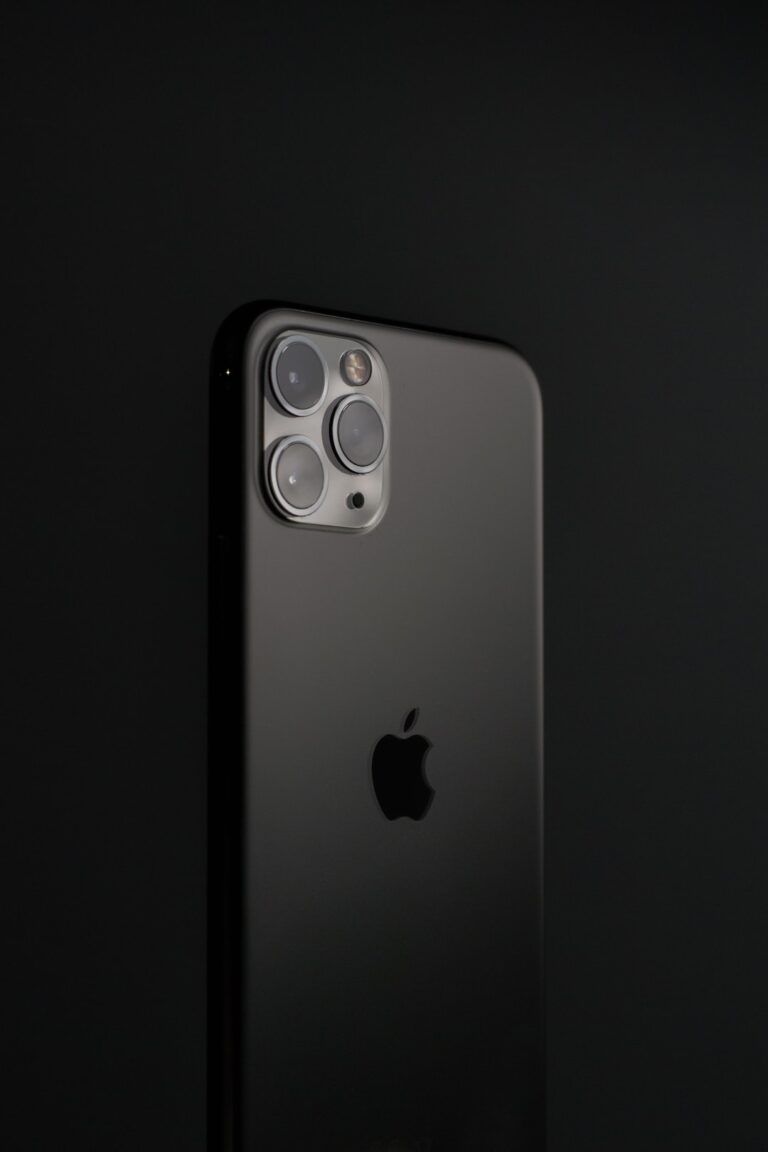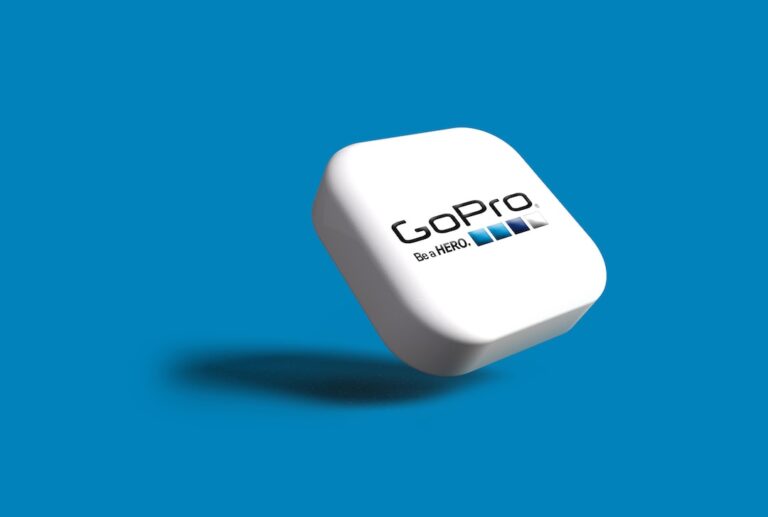Support our educational content for free when you purchase through links on our site. Learn more
📸 Best Camera for Photography in 2025: Top 10 Picks Revealed!
Ever found yourself lost in the endless sea of camera specs, wondering which one truly deserves a spot in your bag? We’ve all been there—standing in front of a wall of shiny cameras, feeling the weight of decision paralysis. But here’s a little secret from the Camera Brands™ team: the best camera isn’t always the most expensive or the flashiest. It’s the one that fits your style, your needs, and your creative vision like a glove.
Did you know that sensor size and lens quality often trump megapixels when it comes to stunning photos? Or that mirrorless cameras are rapidly overtaking DSLRs thanks to their compact design and lightning-fast autofocus? In this comprehensive guide, we’ll unravel these mysteries and reveal the top 10 cameras for photography in 2025, from pro-level full-frame beasts to budget-friendly gems and pocket-sized powerhouses. Ready to find your perfect photographic partner? Let’s dive in!
Key Takeaways
- Sensor size and lens quality are paramount—full-frame and APS-C sensors deliver superior image quality compared to smaller sensors.
- Mirrorless cameras dominate the market with advanced autofocus, in-body stabilization, and compact designs.
- Choosing the best camera depends on your shooting style, skill level, and budget—there’s a perfect match for everyone.
- Top picks include Sony α7 IV, Fujifilm X-T5, and Canon EOS R6 Mark II for various needs and budgets.
- Don’t forget essential accessories and post-processing software to unlock your camera’s full potential.
👉 Shop top camera brands and models:
Ready to capture breathtaking moments? Your perfect camera awaits!
Table of Contents
- ⚡️ Quick Tips and Facts: Your Fast Track to Camera Knowledge!
- 📸 The Shutterbug’s Journey: A Brief History of Photography & Camera Evolution
- 🤔 What Makes a Camera “The Best” for YOU? Understanding Your Photographic Needs
- 💡 Key Camera Features to Consider: Beyond Megapixels!
- 🔍 Decoding Camera Types: Which One Suits Your Style?
- 1. 👑 The All-Rounder’s Crown Jewel: Best Professional & Enthusiast Full-Frame Cameras
- 2. 🚀 Power in a Smaller Package: Top APS-C Cameras for Advanced Photography
- 3. 🎯 The Sweet Spot: Best Mid-Range Cameras for Serious Amateurs
- 4. 🎒 Your First Step into the DSLR/Mirrorless World: Excellent Entry-Level Cameras
- 5. 💰 Bang for Your Buck: The Best Budget-Friendly Cameras
- 6. ✈️ Pocket Powerhouses: Best Compact & Travel Cameras
- 7. 🎥 For the Hybrid Creator: Top Cameras for Both Photo & Video
- 8. 🏞️ Adventure Awaits: Best Rugged & Action Cameras
- 9. 🤳 Instant Gratification: Fun & Creative Instant Cameras
- 10. 📱 The Ultimate Convenience: Why Your Smartphone Might Be Enough (Yes, Really!)
- ⚙️ Understanding Lenses: The True Heart of Your Camera System
- 🛠️ Essential Camera Accessories: Gear Up for Success!
- ☁️ The Digital Darkroom: Software & Post-Processing Essentials
- 📸 Mirrorless vs. DSLR: The Great Debate Continues!
- 🆕 Future-Proofing Your Purchase: What’s Next in Camera Tech?
- ❌ Common Camera Buying Mistakes to Avoid
- ❓ When to Upgrade Your Camera: Signs It’s Time!
- 🎯 Conclusion: Finding Your Perfect Photographic Partner
- 🔗 Recommended Links & Resources
- ❓ Frequently Asked Questions (FAQ)
- 📚 Reference Links & Further Reading
⚡️ Quick Tips and Facts: Your Fast Track to Camera Knowledge!
Welcome to the fast lane of camera wisdom! Before we dive deep into the sea of specs and models, here are some quick nuggets to keep in your photographic toolkit:
- Sensor size matters more than megapixels. Bigger sensors capture more light and detail. Think full-frame > APS-C > Micro Four Thirds.
- Lens quality beats megapixels every time. A sharp lens can make a 20MP sensor outperform a 50MP sensor with a mediocre lens.
- Mirrorless cameras are stealing the show with compact bodies, fast autofocus, and in-body image stabilization (IBIS).
- DSLRs still rock for optical viewfinders and battery life, especially for outdoor and wildlife shooters.
- Autofocus systems have evolved—look for cameras with AI-driven subject tracking for sports and wildlife.
- Weather sealing is a must if you shoot outdoors in unpredictable conditions.
- Video features are often baked in but can be a distraction if you’re purely a stills shooter.
- Try before you buy! Ergonomics and menu systems can make or break your experience.
- Future-proof your gear by considering lens ecosystems and firmware update support.
We’ll unpack all these and more, so buckle up! 🚀
📸 The Shutterbug’s Journey: A Brief History of Photography & Camera Evolution
Photography is a tale of light, chemistry, and now, silicon magic. From the daguerreotype in 1839 to today’s mirrorless marvels, cameras have evolved dramatically.
- Early days: Cameras were bulky boxes with glass plates.
- Film era: 35mm film revolutionized portability and accessibility.
- Digital revolution: The 1990s brought sensors that replaced film, enabling instant review and editing.
- Mirrorless rise: The last decade saw mirrorless cameras challenge DSLRs with smaller bodies and cutting-edge tech.
- Smartphones: While not traditional cameras, they democratized photography, pushing camera makers to innovate.
Understanding this evolution helps us appreciate why certain features exist and how they impact your photography journey. For a deep dive, check out The History of Photography.
🤔 What Makes a Camera “The Best” for YOU? Understanding Your Photographic Needs
The best camera is a bit like the best pizza—it depends on your taste! Here’s how to figure out your perfect match:
- What do you shoot? Landscapes, portraits, wildlife, food, or street photography?
- Where do you shoot? Studio, outdoors, travel, or low-light environments?
- What’s your skill level? Beginner, enthusiast, or pro?
- Do you want video capabilities? Or strictly stills?
- Budget and size preferences? Heavy DSLRs or pocketable compacts?
Answering these helps narrow down the overwhelming choices. For example, a wildlife photographer needs fast autofocus and long telephoto lenses, while a food photographer prioritizes color accuracy and macro capabilities.
💡 Key Camera Features to Consider: Beyond Megapixels!
Let’s bust the megapixel myth and look at what really counts:
| Feature | Why It Matters | What to Look For |
|---|---|---|
| Sensor Size | Bigger sensor = better image quality & low light | Full-frame or APS-C for best balance |
| Autofocus System | Sharp focus on moving subjects | AI tracking, phase-detection points |
| Image Stabilization | Reduces blur from hand shake | In-body (IBIS) preferred |
| Lens Compatibility | Determines your creative options | Wide lens ecosystem (Canon RF, Sony E) |
| ISO Range | Ability to shoot in low light | Higher max ISO with low noise |
| Burst Rate | For action and wildlife | 8+ fps for fast subjects |
| Viewfinder Type | Optical vs electronic for framing | EVF for mirrorless, OVF for DSLR fans |
| Build Quality & Weather Sealing | Durability in tough conditions | Weather sealed bodies for outdoors |
| Video Capabilities | Bonus for hybrid shooters | 4K video, slow motion, clean HDMI output |
Remember, features should align with your style and goals. Don’t get dazzled by specs alone!
🔍 Decoding Camera Types: Which One Suits Your Style?
Here’s the lowdown on the main camera families:
- DSLRs (Digital Single-Lens Reflex): Classic design, optical viewfinder, robust battery life. Great for traditionalists and outdoor shooters.
- Mirrorless Cameras: Compact, lightweight, faster autofocus, electronic viewfinders. The future of photography.
- Compact Cameras: Pocketable, simple, often with fixed lenses. Perfect for casual shooting and travel.
- Bridge Cameras: Superzoom lenses, DSLR-like body but smaller sensor. Good for versatility without changing lenses.
- Instant Cameras: Fun, retro-style prints on the spot. Great for parties and creative projects.
- Action Cameras: Rugged, waterproof, wide-angle. Ideal for adventure and sports.
Each has pros and cons. For example, mirrorless cameras like the Sony α7 IV combine portability with professional features, while DSLRs like the Nikon D850 offer legendary ergonomics and optical viewfinders.
1. 👑 The All-Rounder’s Crown Jewel: Best Professional & Enthusiast Full-Frame Cameras
Rating Table
| Camera Model | Design | Image Quality | Autofocus | Build Quality | Video | Lens Ecosystem | Overall |
|---|---|---|---|---|---|---|---|
| Sony α7 IV | 9 | 9.5 | 9 | 9 | 8.5 | 9 | 9 |
| Canon EOS R6 Mark II | 9 | 9 | 9.5 | 8.5 | 9 | 8 | 8.8 |
| Nikon Z7 II | 8.5 | 9.5 | 8.5 | 9 | 8.5 | 8.5 | 8.8 |
Why These Cameras Reign Supreme
Sony α7 IV is a powerhouse with a 33MP full-frame sensor, excellent dynamic range, and IBIS. Its dual card slots and weather sealing make it a versatile workhorse. The vast Sony E-mount lens lineup means you’re spoiled for choice. We love its crisp EVF and intuitive controls.
Canon EOS R6 Mark II shines with blazing autofocus and burst rates, perfect for wildlife and sports. Ergonomics are top-notch, though the RF lens ecosystem is still growing. It’s a great pick if you prioritize speed and handling.
Nikon Z7 II offers stunning 45.7MP resolution, great for landscape and studio work. Its robust build and excellent image quality make it a favorite for detail-oriented shooters.
Considerations
- These cameras are investments; ensure you have the lenses and accessories to match.
- Battery life on mirrorless can be shorter than DSLRs.
- Firmware updates often add new features—keep your gear updated!
👉 CHECK PRICE on:
2. 🚀 Power in a Smaller Package: Top APS-C Cameras for Advanced Photography
Rating Table
| Camera Model | Design | Image Quality | Autofocus | Build Quality | Video | Lens Ecosystem | Overall |
|---|---|---|---|---|---|---|---|
| Fujifilm X-T5 | 9 | 9 | 8.5 | 8.5 | 8 | 8.5 | 8.7 |
| Sony α6700 | 8.5 | 8.5 | 9 | 8 | 8.5 | 8.5 | 8.5 |
| Canon EOS R10 | 8 | 8 | 8.5 | 7.5 | 8 | 7.5 | 7.8 |
Why APS-C Rocks
APS-C sensors strike a balance between size, cost, and image quality. The Fujifilm X-T5 boasts a 40.2MP sensor with classic dials and film simulation modes beloved by street and portrait photographers. Its three-way tilting screen adds flexibility.
The Sony α6700 excels with AI autofocus and IBIS, making it a compact powerhouse for wildlife and action. Its battery life is impressive for the class.
The Canon EOS R10 is beginner-friendly with solid autofocus and quick burst shooting, great for sports and casual use.
Drawbacks
- APS-C sensors have less low-light performance than full-frame.
- Lens ecosystems vary; Fujifilm’s X-mount is mature, Canon’s RF APS-C is growing.
👉 Shop APS-C Cameras on:
3. 🎯 The Sweet Spot: Best Mid-Range Cameras for Serious Amateurs
Mid-range cameras offer a fantastic blend of features and affordability. Here are our top picks:
| Camera Model | Sensor Size | Burst Rate | Video | Build Quality | Autofocus | Overall |
|---|---|---|---|---|---|---|
| Nikon D7500 | APS-C | 8 fps | FHD | Weather sealed | 51 pts | 8 |
| Canon 6D Mark II | Full-frame | 6.5 fps | FHD | Weather sealed | 45 pts | 7.8 |
| Fujifilm X-H1 | APS-C | 14 fps | 4K | Weather sealed | Hybrid AF | 8.2 |
Nikon D7500 is a rugged DSLR with excellent autofocus and weather sealing, great for outdoor enthusiasts.
Canon 6D Mark II offers full-frame quality with a fully articulating touchscreen, perfect for portraits and events.
Fujifilm X-H1 is a feature-packed APS-C mirrorless with IBIS and 4K video, ideal for hybrid shooters.
4. 🎒 Your First Step into the DSLR/Mirrorless World: Excellent Entry-Level Cameras
Starting out? These cameras give you great bang for your buck with user-friendly features:
| Camera Model | Sensor Size | Autofocus | Video | Weight | Overall |
|---|---|---|---|---|---|
| Canon EOS Rebel T7i | APS-C | 45 pts | FHD | 1.07 lb | 8 |
| Nikon D5600 | APS-C | 39 pts | FHD | 1.02 lb | 7.8 |
| Sony α6100 | APS-C | 425 pts | 4K | 1.02 lb | 8.5 |
Canon EOS Rebel T7i features a flip-out touchscreen and excellent autofocus for beginners.
Nikon D5600 offers a rotating touchscreen and SnapBridge connectivity for easy sharing.
Sony α6100 packs a punch with 4K video and a fast autofocus system, great for vloggers.
5. 💰 Bang for Your Buck: The Best Budget-Friendly Cameras
You don’t have to break the bank to get decent shots. Here are budget champs:
| Camera Model | Sensor Size | Features | Pros | Cons |
|---|---|---|---|---|
| Canon EOS Rebel SL3 | APS-C | Flip-out screen, WiFi | Lightweight, easy to use | Limited 4K video |
| Panasonic Lumix G7 | Micro Four Thirds | 4K video, articulating screen | Great video features | Smaller sensor, noise |
| Olympus OM-D E-M10 Mark IV | Micro Four Thirds | IBIS, compact | Stylish, beginner-friendly | Limited battery life |
Budget cameras are perfect for casual shooters, students, or those testing the waters.
6. ✈️ Pocket Powerhouses: Best Compact & Travel Cameras
When size and convenience matter, these compacts shine:
| Camera Model | Sensor Size | Zoom Range | Features | Best For |
|---|---|---|---|---|
| Sony RX100 VII | 1-inch | 24-200mm | Fast AF, 4K video | Travel, street |
| Canon G7X Mark III | 1-inch | 24-100mm | Flip-up screen, 4K video | Vlogging, travel |
| Ricoh GR III | APS-C | Fixed 28mm | Snap focus, IBIS | Street, everyday carry |
The Sony RX100 VII is a favorite for its pocket size and professional features.
7. 🎥 For the Hybrid Creator: Top Cameras for Both Photo & Video
If you want to shoot stunning photos and video, consider:
| Camera Model | Photo Specs | Video Specs | Autofocus | Stabilization | Overall |
|---|---|---|---|---|---|
| Panasonic Lumix GH6 | Micro Four Thirds | 5.7K 60fps, 4K 120fps | Advanced | IBIS + lens | 8.5 |
| Sony α7 IV | Full-frame | 4K 60fps 10-bit HDR | Excellent | IBIS | 9 |
| Canon EOS R6 Mark II | Full-frame | 4K 60fps 10-bit HDR | Excellent | IBIS | 8.8 |
These cameras offer professional video codecs, great autofocus, and image stabilization.
8. 🏞️ Adventure Awaits: Best Rugged & Action Cameras
For thrill-seekers and outdoor lovers:
| Camera Model | Sensor Size | Durability | Features | Best Use |
|---|---|---|---|---|
| GoPro HERO11 Black | 1/2.3-inch | Waterproof, shockproof | 5.3K video, HyperSmooth | Action sports, underwater |
| Olympus Tough TG-6 | 1/2.3-inch | Waterproof, crushproof | Macro modes, GPS | Hiking, diving |
| DJI Osmo Action 3 | 1/2.3-inch | Waterproof, shockproof | Dual screens, 4K 120fps | Adventure vlogging |
These cameras are built to survive your wildest adventures.
9. 🤳 Instant Gratification: Fun & Creative Instant Cameras
Nothing beats the joy of holding a photo seconds after snapping it:
| Camera Model | Film Type | Features | Best For |
|---|---|---|---|
| Fujifilm Instax Mini 11 | Instax Mini | Automatic exposure | Parties, gifts |
| Polaroid Now+ | i-Type/600 | Bluetooth app control | Creative instant prints |
| Leica Sofort | Instax Mini | Multiple shooting modes | Stylish instant photos |
Instant cameras add a tactile, nostalgic element to photography.
10. 📱 The Ultimate Convenience: Why Your Smartphone Might Be Enough (Yes, Really!)
Smartphones have come a long way, with features like:
- Multiple lenses (wide, ultra-wide, telephoto)
- Computational photography (night mode, HDR)
- AI-driven autofocus and scene recognition
- Instant sharing and editing apps
For casual shooters and social media enthusiasts, the latest iPhone or Samsung Galaxy can be a powerful photographic tool. But if you crave creative control, optical zoom, or superior image quality, dedicated cameras still rule.
⚙️ Understanding Lenses: The True Heart of Your Camera System
A camera body is just a shell without glass magic. Here’s why lenses matter:
- Focal length: Determines your field of view (wide-angle, standard, telephoto).
- Aperture: Controls depth of field and low-light performance (lower f-number = brighter lens).
- Lens mount: Must match your camera brand and model.
- Prime vs Zoom: Primes offer sharper images, zooms offer flexibility.
- Image stabilization: Some lenses have built-in stabilization to complement IBIS.
Pro tip: Invest in quality lenses—they outlast camera bodies and elevate your photography.
🛠️ Essential Camera Accessories: Gear Up for Success!
Don’t stop at the camera! These accessories can transform your shooting experience:
- Tripod: For sharp landscapes and long exposures.
- Extra batteries: Mirrorless cameras can drain batteries fast.
- Memory cards: Fast UHS-II or CFexpress cards for burst and 4K video.
- Camera bag: Protect and organize your gear.
- Filters: Polarizers, ND filters for creative effects.
- Remote shutter release: Avoid camera shake.
- Cleaning kit: Keep your sensor and lenses spotless.
☁️ The Digital Darkroom: Software & Post-Processing Essentials
Great photos often start in-camera but shine in post:
- Adobe Lightroom: Industry standard for cataloging and editing.
- Adobe Photoshop: For advanced retouching and composites.
- Capture One: Preferred by many pros for color grading.
- DxO PhotoLab: Excellent noise reduction and lens corrections.
- Mobile apps: Snapseed, VSCO for quick edits on the go.
Learning post-processing unlocks your camera’s full potential.
📸 Mirrorless vs. DSLR: The Great Debate Continues!
Mirrorless Cameras:
✅ Smaller, lighter bodies
✅ Faster autofocus with on-sensor phase detection
✅ Electronic viewfinders with real-time previews
❌ Shorter battery life
❌ Lens ecosystems still growing for some brands
DSLR Cameras:
✅ Optical viewfinders with zero lag
✅ Longer battery life
✅ Established lens ecosystems
❌ Bulkier and heavier
❌ Slower live view autofocus
Our take? Mirrorless is the future, but DSLRs remain relevant for many pros and enthusiasts.
🆕 Future-Proofing Your Purchase: What’s Next in Camera Tech?
Stay ahead of the curve by considering:
- AI-powered autofocus and scene recognition
- Higher resolution sensors with improved dynamic range
- Enhanced in-body image stabilization
- Better battery technology
- Wireless charging and faster data transfer
- Integration with smartphones and cloud services
Buying a camera with firmware update support ensures you get new features without upgrading hardware.
❌ Common Camera Buying Mistakes to Avoid
- Choosing based on megapixels alone
- Ignoring lens ecosystem compatibility
- Overlooking ergonomics and handling
- Forgetting to budget for lenses and accessories
- Buying outdated models without firmware support
- Neglecting to try the camera in hand before purchase
Avoid these pitfalls to get gear that truly fits your style.
❓ When to Upgrade Your Camera: Signs It’s Time!
- Your current camera can’t keep up with your growing skills
- Autofocus or image quality limitations hold you back
- Frequent battery or reliability issues
- Desire for features like IBIS, higher resolution, or better video
- Lens ecosystem or accessory compatibility
Upgrading is a personal decision—sometimes patience pays off, sometimes it’s time to jump!
🎯 Conclusion: Finding Your Perfect Photographic Partner
After our whirlwind tour through the camera universe, one thing is crystal clear: there’s no one-size-fits-all best camera for photography. Your ideal camera depends on your style, needs, and budget. But here’s the scoop from the Camera Brands™ team:
-
Full-frame mirrorless cameras like the Sony α7 IV offer exceptional image quality, versatile lens options, and professional features that satisfy both enthusiasts and pros. Its 33MP sensor, IBIS, and weather sealing make it a reliable workhorse for landscapes, portraits, and wildlife alike. Downsides? Battery life can be a bit tight, and the price is an investment — but well worth it for serious photographers.
-
APS-C cameras such as the Fujifilm X-T5 deliver superb detail with a compact form factor, classic controls, and vibrant color profiles. It’s a favorite for street and portrait shooters who want quality without the bulk.
-
For beginners, Canon’s EOS Rebel T7i or Nikon D5600 provide user-friendly interfaces and solid performance, perfect for learning the ropes without overwhelming complexity.
-
If you’re on a budget, don’t underestimate compact and entry-level models; they’re capable of stunning shots and can be great travel companions.
Remember our early tip: lens quality and your personal comfort with the camera are just as important as specs. Try before you buy, consider your shooting style, and invest in lenses and accessories that grow with you.
So, whether you’re chasing sunsets, capturing smiles, or freezing fast action, your perfect camera is out there waiting to help you capture your moments beautifully. Ready to start your photographic adventure? Let’s get clicking! 📸✨
🔗 Recommended Links & Resources
👉 Shop Cameras & Gear:
-
Sony α7 IV:
Amazon | B&H Photo | Sony Official Website -
Canon EOS R6 Mark II:
Amazon | B&H Photo | Canon Official Website -
Fujifilm X-T5:
Amazon | B&H Photo | Fujifilm Official Website -
Canon EOS Rebel T7i:
Amazon | B&H Photo | Canon Official Website -
Nikon D5600:
Amazon | B&H Photo | Nikon Official Website -
Sony α6100:
Amazon | B&H Photo | Sony Official Website
Recommended Books on Photography:
-
Understanding Exposure by Bryan Peterson — A must-read for mastering camera settings and light.
Amazon Link -
The Digital Photography Book by Scott Kelby — Practical tips from a pro for every level.
Amazon Link -
Read This If You Want to Take Great Photographs by Henry Carroll — Clear, inspiring guidance for beginners.
Amazon Link
❓ Frequently Asked Questions (FAQ)
What features should I look for in a camera for professional photography?
Professional photography demands high image quality, reliable autofocus, robust build, and versatility. Look for:
- Full-frame sensors for superior dynamic range and low-light performance.
- Advanced autofocus systems with subject tracking for sharp images in action.
- Weather sealing to shoot confidently outdoors.
- In-body image stabilization (IBIS) to reduce blur.
- Dual card slots for backup and extended shooting.
- A wide lens ecosystem to cover various focal lengths and styles.
Brands like Sony, Canon, and Nikon lead here with models like the Sony α7 IV and Canon EOS R6 Mark II.
How do I choose the right lens for my camera to capture high-quality images?
Choosing lenses depends on your subject and shooting style:
-
Focal length:
- Wide-angle (14-35mm) for landscapes and architecture.
- Standard (35-70mm) for portraits and everyday use.
- Telephoto (70mm+) for wildlife and sports.
-
Aperture:
- Wider apertures (f/1.2–f/2.8) allow better low-light shooting and creamy bokeh.
- Zoom lenses offer flexibility but may have smaller max apertures.
-
Compatibility: Ensure the lens mount matches your camera brand and model.
-
Image stabilization: Helps reduce shake, especially for telephoto or low-light shots.
Investing in prime lenses often yields sharper images, but zooms provide versatility. Start with a versatile zoom (like 24-70mm f/2.8) and expand as you grow.
What are the differences between DSLR and mirrorless cameras for photography?
-
DSLRs use a mirror and optical viewfinder, offering longer battery life and an optical, lag-free view. They tend to be bulkier but have a mature lens ecosystem.
-
Mirrorless cameras lack a mirror, using electronic viewfinders (EVFs) that provide real-time exposure previews and faster autofocus. They are generally lighter and more compact but may have shorter battery life.
Mirrorless is the future-proof choice with rapid innovation, while DSLRs remain solid for those valuing optical viewfinders and battery endurance.
What is the best camera brand for photography, and why are they highly recommended by professionals?
The top brands—Sony, Canon, Nikon, and Fujifilm—each bring unique strengths:
- Sony: Industry leader in mirrorless tech with excellent sensors and autofocus (e.g., α7 series).
- Canon: Renowned for ergonomics, color science, and a growing RF lens ecosystem.
- Nikon: Offers superb image quality and robust DSLRs and mirrorless options.
- Fujifilm: Loved for APS-C cameras with beautiful color profiles and tactile controls.
Professionals choose based on system compatibility, lens availability, and personal preference. All these brands deliver exceptional results when matched to your needs.
How important is post-processing software in photography?
Post-processing is crucial for refining images, correcting exposure, enhancing colors, and creative effects. Software like Adobe Lightroom and Photoshop are industry standards, enabling photographers to unlock their camera’s full potential. Beginners can start with free or mobile apps, but investing time in editing skills pays off massively.
📚 Reference Links & Further Reading
- Sony α7 IV Official Site
- Canon EOS R6 Mark II Official Site
- Fujifilm X-T5 Official Site
- Nikon D5600 Official Site
- Cameras | Wirecutter — In-depth reviews and buying guides
- Understanding Exposure – Britannica
- Photography Tips & Tutorials – Digital Photography School
Ready to capture your world with confidence? Dive into our detailed reviews and guides at Camera Brands™ and start your photographic adventure today! 📷✨






